Judging on Top Ten Best Trekking Trails in Nepal from the surface level without deep research will be an injustice because that may lead the trekkers into confusion. The confusion is that which trekking trail they should go with while making a holiday trip in the Himalayas of Nepal.
The best ones should not betray the people’s expectations while going through it. In the same way, we have worked out the Top Ten Best Trekking Trails in Nepal after long research. We traced out the preference and the direct involvement of the trekkers in a particular trekking trail that made the best of the bests.
The best for you also depends on your affordability and how accessible it is. For instance, one really dreams to step at Everest Base Camp at the age of 70 with weaker fitness, it won’t be possible. For him/her, the Poon Hill Trek, probably, is the best trek to see the spectacular mountain range of Nepal. So, while finding the best trekking trail for you, consider the following things:
- Your Age
- Your Fitness Level
- Your Time Frame
- Your Budget
- Your Interest
However, these guidelines are applied in every case while planning a trekking trip in Nepal. The best is always the best. Now, let’s go to see our Top Ten Best Trekking Trails in Nepal. Definitely, there are numerous exciting and marvelous trekking trails in Nepal to experience the Himalayan region but, now, we are going to talk about the Top Ten Best Trekking Trails in Nepal one by one in detail.
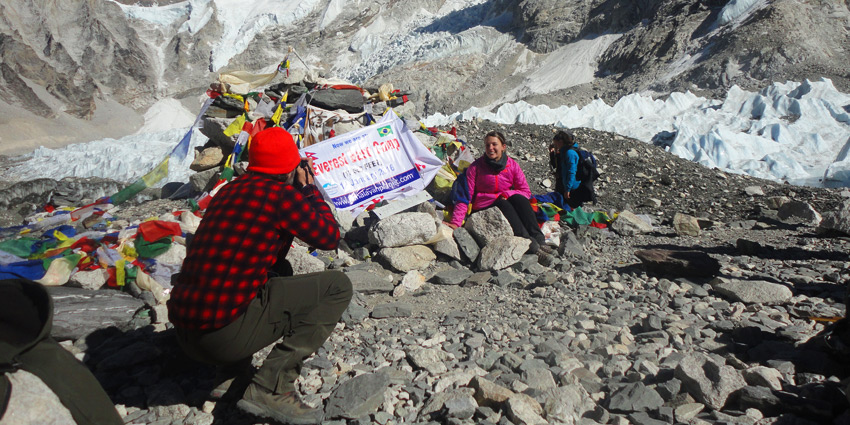
Everest base camp trek is considered to be the best of the bests trekking trails in Nepal. Always comes in the first in the bucket list of the trekkers’ holiday trekking in Nepal. Even, the lonely planet and trip advisor recommend Everest base camp trek as one of the best trekking destinations among the top ten best trekking destinations of the world.
Why Everest Base Camp Trek?
- For capturing the most stupendous Mt. Everest and other towering mountain peaks
- For stepping at the base camp of the highest mountain peak of the world, Everest Base Camp.
- For experiencing the marvelous Sherpa kingdom and their authentic culture
- For exploring Sagarmatha National Park, the national park located at the highest elevation of the world and also a UNESCO World Heritage Site.
- For visiting Hotel Everest View, Namche Bazaar, Tengboche Monastery, and Lukla Airport
What are other things to know about Everest Base Camp Trek?
How long is the trek?
Normally, the trek is for two weeks including two day’s acclimatization (the first at Namche and the second at Dingboche). This two weeks timing will be the perfect trekking trip to each individual who is planning their Everest base camp trek. However, some people ask to set the itinerary ending in 12 or 11 days too. Now, you can see various Everest base camp trek itineraries like Short Everest Base Camp Trek, Rapid Everest base camp trek, Luxury Everest base camp trek, and Mt. Everest base camp trek with a helicopter flight from Kala Patthar and many other itineraries are designed for Everest base camp trek.
Thus, you can also ask the local travel partner to set an itinerary according to your interest and time frame. In fact, 14 days Everest base camp trek will always be the best-suited itinerary to the trekkers.
How are food and accommodation?
Generally, the trekkers will be spending the nights at local lodges during their Everest base camp trek. Some trekkers also ask to upgrade the standard of accommodation and food items which are only possible in Namche and Dingboche. We get better accommodation and food because these two towns are, relatively; bigger and more developed among the town on the way to Everest base camp.
Regarding foods, we can see the items mentioned in the menu provided by the local lodges and eat accordingly. These days, you can get almost all items of food you like because they are hiring professional chefs with modern menus as you get in the developed towns.
What are the required permits?
You need to obtain two different permits for your Everest Base Camp Trek. TIMS Card (Trekkers Information Management System) and Sagarmatha National Park entry permit are the necessary permits. But, for Nepali citizens, both are not required to do Everest base camp trek.
How difficult is the trek?
Actually, the Everest base camp trek is neither moderate nor challenging. It lies somewhere in between. It is because you are going above 5000m which is, sometimes, challenging. But for those who are physically sound, they find it just a moderate adventure.
We need to work out 6-7 hours a day. We start at around 8 in the morning and stop between 3 - 4 pm in the afternoon. Thus, you need to prepare accordingly.
.jpg)
Gokyo Ri trek is to see the Mt. Everest and other towering mountain summits above eight thousand, spectacular Gokyo Lake and to climb up to Gokyo Ri. This trek route is located in Everest Region. For the Gokyo Ri trek, we leave the trail to Everest Base Camp after we pass Namche and walk up to magnificent Gokyo Valley. Probably the most liked trekking trails in Nepal.
Why Gokyo Ri Trek?
- To capture the most breathtaking Mt. Everest, Nuptse, Lhotse, Mt. Cho Oyu, Pumori, and many other summits of the Khumbu region
- To experience various species of flora and fauna in Sagarmatha National Park
- To explore the towns like Lukla, Namche, and Gokyo Valley
- To enjoy the serenity with spectacular Gokyo and other 4 lakes and glaciers
What are other things to know about Goky Ri Trek?
How long is the trek?
14 days Gokyo Ri trek is the best Gokyo Ri trek itinerary for the trekkers including day acclimatization at Namche. However, people go with different tailor-made itineraries like 11 days Gokyo Ri Trek, 12 days Gokyo Ri Trek, and 10 days Gokyo Ri Trek without acclimatization at Namche Bazaar. These itineraries are only for those who have a fairly good level of fitness and stamina of walking at least 6-7 hours in higher elevation.
How are food and accommodation?
You may get better accommodation at Namche and Gokyo Valley, otherwise, you will stay overnight at ordinary local lodges and have your food as mentioned in the menu. There are certain items like Nepali, Indian, and some continental on the menu and you can order whichever you like. The most common food items you will get on this trail are Daal Bhat, Dumpling, Chowmein, Pizza, Tenduk, noodles, and bread items.
These days, you can get better accommodation at Phakding too.
What are the required permits?
Trekkers who are planning their Gokyo Ri Trek require to obtain two different permits for your Everest Base Camp Trek. TIMS Card (Trekkers Information Management System) and Sagarmatha National Park Entry Permit are the necessary permits. But, for Nepali nationals, both are not required for entry.
How difficult is the trek?
People rate Gokyo Ri Trek a moderate adventure in the Everest region. Climbing up to Gokyo Ri, sometimes, becomes challenging. Also, initially, ascending up to Namche Bazar, somehow, turns to be difficult too. Otherwise, you will fully celebrate this trek with a fairly good level of physical fitness. Be prepared to work for at least 6 hours a day at higher elevation encountering ups and downs.
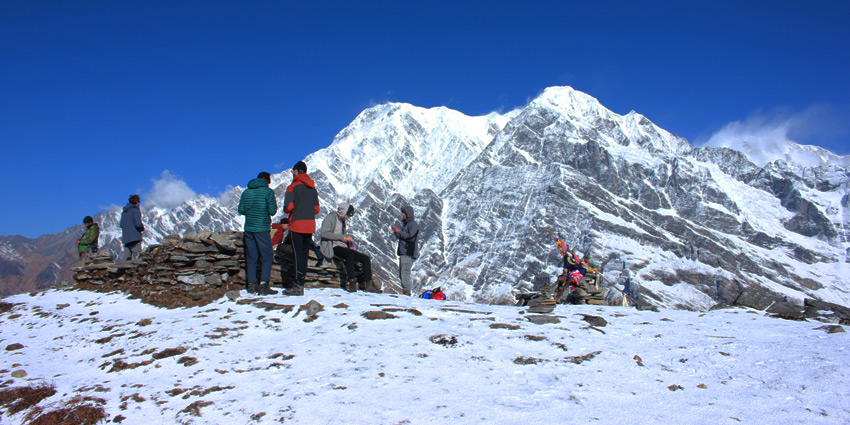
Mardi Himal Trek is all the way to Mardi Himal Base Camp in order to capture the mesmerizing Machhapuchhre, Annapurna range, Mardi Himal, Manaslu, and Ganesh Himal. On the way, you will celebrate the walk through local villages, lush and unspoiled woods, and experience diverse species of flora and fauna in the Annapurna Conservation Area. You are going to experience the less crowded trekking trail while venturing on the Mardi Himal Trekking trail.
Why Mardi Himal Trek?
- To capture the astonishing Annapurna massif, Machhapuchhre, Mardi Himal, Manaslu, Ganesh Himal and some part of Dhaulagiri.
- To enjoy melodious waterfalls, lush rhododendron, and high pastures
- To enjoy the absolute freedom in wild nature
- To celebrate the walk through local villages and terraced fields
What are other important things to know about Mardi Himal Trek?
How long is the trek?
12 days Mardi Himal Trek is the perfect itinerary suited for every individual who is planning this trek. The working pace is perfect on this itinerary. However, people ask the local trek specialist to design tailor-made trip packages to suit their diverse interests. Maximum two weeks duration including arrival and departure will be the perfect number days to spend for your Mardi Himal Trek.
How are food and accommodation?
Local teahouses will provide you all food and accommodation during the trek. The local lodges/teahouses are neat enough to spend the night. The local people are very friendly and hospitable. You will enjoy local items of food mostly. Nepali Daal Bhat is the most common food item found on the trail.
What are the required permits?
Trekkers who are planning their Mardi Himal Trek require obtaining two different permits. TIMS Card (Trekkers Information Management System) and Annapurna Conservation Area Entry Permit are the necessary permits. But, for Nepali nationals, both are not required for entry.
How difficult is the trek?
Mardi Himal Trek is a moderate trek in the Annapurna region. The 12 days trek takes you to the Mardi Himal Base Camp (3,580m) which is the highest point of this trek. You can combine this trek with Poonhill too which will be a beautiful idea. The trail from Landruk gets steeper passing through Forest Camp and High Camp and the final section is, more or less, challenging because you will encounter the steep rocky trail. Besides that, you will have a spectacular walk among incredible mountain panorama. You require working for 6-7 hours a day.
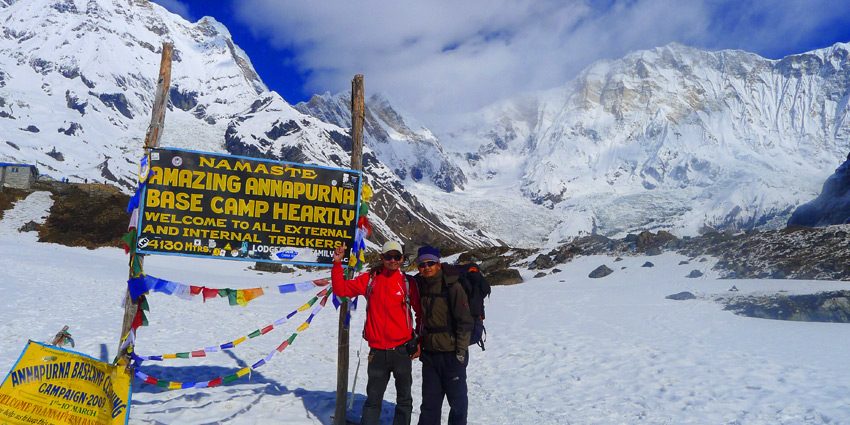
Annapurna Base Camp Trek is a beautiful moderate walk through Annapurna Conservation Area which, finally, takes you to the base camp of Mt. Annapurna. The trek also encompasses spectacular Pokhara city, soothing natural waterfall, lush forest, and authentic local ethnic settlements. The trek is all about capturing majestic mountain peaks including Annapurna massif, alluring Machhapuchhre, Manaslu, Ganesh Himal, and many other incredible snow-fed peaks.
Why Annapurna Base Camp Trek?
- To witness the entire western mountain range of Nepal Annapurna massif, alluring Machhapuchhre, Manaslu, Ganesh Himal, and many other incredible snow-fed peaks
- To experience diverse species of flora and fauna in Annapurna Conservation Area
- To celebrate the walkthrough beautiful local villages and lush forest
- To encounter with local people and have insights of their way of life
What are other things to know about Annapurna Base Camp Trek?
How long is the trek?
Two weeks or 16 days Annapurna Base Camp Trek itinerary will be the best-preferred itinerary for Annapurna Base Camp Trek. However, people go with various Annapurna Base Camp Trek itineraries like Short Annapurna Base Camp Trek, Budget Annapurna Base Camp Trek, and many more.
How are food and accommodation?
The local people run lodges/teahouses on the trail which provides you food and accommodation. The food items you have are hygienic and organic. Your accommodation will be on a sharing basis. The beds are very tidy. During peak trekking season, autumn, the lodges are crowded and it is hard to find the accommodation.
What are the required permits?
For Annapurna Base Camp Trek, one requires obtaining two different permits. TIMS Card (Trekkers Information Management System) and Annapurna Conservation Area Entry Permit are the necessary permits. But, for Nepali nationals, both permits are not required for entry. They can do this trek without permits.
How difficult is the trek?
Trekking to Annapurna Base Camp is considered as a moderate adventure in Nepal. The average working hours in a day is 6-7 hours. The work includes numerous ups and downs for hours. Be prepared to challenge wild nature with high-level fitness and confidence. Annapurna Base Camp Trek doesn’t consist of any high and technical passes. Those who have basic skills and stamina of hiking for 6-7 hours in a day can accomplish this trek.

Poon hill is, probably, the most rewarding short and easy trek in Nepal located in the lower Annapurna region. This trek takes you to the top of Poon hill and offers us incredible sunrise, sunset, and breathtaking mountain panorama including the Annapurna massif, Dhaulagiri, Machhapuchhre, Lamjung Himal, Manaslu, Ganesh Himal, and many other towering peaks.
Why Poon hill Trek?
- For the great experience of an easy walk in the heart Annapurna mountain range
- To capture stupendous Annapurna massif, Dhaulagiri, Machhapuchhre, Lamjung Himal, Manaslu, and Ganesh Himal
- To enjoy natural waterfalls, lush rhododendron, local villages, and terraced fields
- Also to explore beautiful Pokhara city
What are other things to know about Annapurna Base Camp Trek?
How long is the trek?
The week duration will be the perfect time frame for Poon hill Trek. However, people do the Poon hill trek in 3, 4, or 5 days too which will be very rush. There are some other itineraries for Poon hill trek like Rapid Poon hill Trek, Budget Poon hill Trek and Short Poon Hill Trek. Spending one week's duration will sufficiently let you experience entire things on the trail.
How are food and accommodation?
After Pokhara, you will stay overnight at local lodges run by local people. They offer you very neat accommodation and hygienic food items. You will be sharing your accommodation with the second person. No luxury suite accommodation is found on the trail. During autumn (Sept-Nov), the lodges are fully occupied and, sometimes, it is very hard to get the accommodation. You are expected to eat where you stay overnight.
What are the required permits?
For your Poon hill Trek, one requires obtaining two different permits. TIMS Card (Trekkers Information Management System) and Annapurna Conservation Area Entry Permit are the necessary permits. But, for Nepali nationals, both permits are not required for entry. They can do this trek without permits.
How difficult is the trek?
It is a short and easy trek in the Annapurna region just above Pokhara city. People with no prior trekking/hiking experience can accomplish this trek easily. There is no threat of getting altitude sickness in this trek. You need to work for 4-5 hours a day. The highest point you get during this trek is Poon hill which is located at 3210m.

This is a venture to the spectacular Tilicho Lake, the lake located at the highest elevation of the world. Everyone who owns a fairly good level of fitness wishes to be there because it the freshwater lake located in the lap of towering mountain peaks. The serene lake and the entire surrounding offer you absolutely blissful moments during the trek.
Why Tilicho Lake Trek?
- To see the majestic freshwater lake, Tilicho, the lake located at the highest elevation of the world
- To capture grand views of Mount Annapurna I (8091m), Manaslu (8163m), and Dhaulagiri (8167m)
- To experience core wilderness among the breathtaking Himalayas
- To have an authentic insight of Nepalese rural lifestyle
What are other things to know about Tilicho Lake Trek?
There are some other important things to know about Tilicho Lake Trek. These are:
How long is the trek?
12 days trek itinerary is the best-suited itinerary for Tilicho Lake. These 12 days will sufficiently satisfy you with proper pacing and acclimatization. However, people ask the travel companies to set the itinerary to suit their interest and time frame. You can go with tailor-made Tilicho Lake Trek if you do not agree with the core Tilicho Lake Trek.
How are food and accommodation?
Since there are not many facilities on the trail, we have to fully depend on local teahouses/lodges for the food and accommodation. In the months of Sept, Oct, and Nov, these lodges are massively populated with trekkers. You have to wait for your food and sometimes, hard to find accommodation. Be ready to share the accommodation with the second person.
How difficult is the trek?
Tilicho Lake Trek is rated as a challenging trek in Nepal. Prior trekking or hiking experiences are expected for the successful accomplishment of the trek. Fairly highs level physical fitness is required for the trek as we are ascending up to 4920m with Thorong La Pass (5,416m). So, trekking above 5000m into the wild Himalayas is not an easy task. Thus, need to prepare accordingly.
What are the required permits?
For your Tilicho Lake Trek, you require obtaining two different permits. TIMS Card (Trekkers Information Management System) and Annapurna Conservation Area Entry Permit are the necessary permits. But, for Nepali nationals, both permits are not required for entry. They can do this trek without permits.

Manaslu Circuit Trek is taken as a restricted area adventure trekking in Nepal. The trek is to experience the less spoiled trails, nature, and culture with astounding mountain peaks including Mt. Manaslu, Annapurna range, Lamjung Himal and Ganesh Himal. This trek lets you experience a completely distinct taste than other, relatively, crowded trekking trails.
Why Manaslu Circuit Trek?
- To capture astounding mountain peaks including Mt. Manaslu, Annapurna range, Lamjung Himal and Ganesh Himal
- To experience less spoiled trails, nature, and culture
- To rejoice the walk through lush forest, sacred monasteries, local settlements, landscapes, etc
- To have an insight of Tibetan Buddhist followers
- To cross Larkya Lass Pass ( 5106m)
What are other things to know about Manaslu Circuit Trek?
There are some other important things to know about Tilicho Lake Trek these are:
How long is the trek?
The perfect duration/time frame for Manaslu Circuit Trek is 18 days. The 18 days Manaslu Circuit Trek includes all necessary acclimatization with a gradual ascent to the higher elevation. But, trekkers compete who can accomplish Manaslu Circuit Trek in less/ fewer trekking days which is not good. You need to have proper acclimatization and time for exploration. Trekking is not only a walking competition. There are some other trekking itineraries for Manaslu Circuit Trek-like Short Manaslu Circuit Trek, Budget Manaslu Circuit Trek, and many more. If you are planning for Manaslu Circuit Trek, you need to think of 18 days trek.
How are food and accommodation?
Manaslu region is, relatively, less facilitated area; therefore, finding luxury accommodation and a diverse menu is impossible. You have to satisfy local lodge accommodation. The same lodges provide your meals. Do not worry, the lodges are neat and the foods are hygienic. Local products are used to prepare food items.
How difficult is the trek?
Undoubtedly, it is a challenging trek. It takes us above 5000m. The highest point we ascend up to is Larkya La Pass which is located at an elevation of 5106m. Only those who have sound physical fitness with more or less prior trekking/hiking experience can accomplish this trek successfully. You are venturing into the wild nature where the facilities like shops, hospitals, ATMs, etc are not available and you are going to cross Larkya La Pass which is one of the challenging high passes of the world. Thus, need to do well preparations accordingly.
What are the required permits?
Trekkers who are planning their Manaslu Circuit Trek require preparing three different permits. Since this is a restricted area trekking trail in Nepal, they have to obtain a special area trekking permit. But you don’t need TIMS Card. The three different types of permits are:
- Manaslu Conservation Area Entry Permit
- Annapurna Conservation Area Entry Permit
- Special Area Trekking Permit
- Tims permit

Langtang Valley Trek is the most popular trekking trip among various trekking packages in the Langtang region. This trek takes us to spectacular Langtang Valley which is inhabited by Tamang people and offers all soaring mountain peaks around including the entire Langtang range and Lirung. The walk via Langtang National Park makes this trekking trip more special because you will enjoy various species of flora and fauna during the walk
Why Langtang Valley Trek?
- To experience incredible Langtang Valley
- To capture astonishing mountain peaks including the Langtang range and the magnificent Lirung
- To enjoy various species flora and fauna in Langtang National Park
- To have an authentic insight into Tamang people’s culture and civilization
What are other things to know about Langtang Valley Trek?
There are some other important things to know about Langtang Valley Trek. These are:
How long is the trek?
11 days itinerary will be the perfect time frame from Langtang Valley Trek. We don’t require any acclimatization during this trek. These 11 days Langtang Trek, you can explore the entire Langtang National Park and the valley. People also go with other customized and tailor-made itineraries for Langtang Valley Trek. If your interest and time frame is not matched with 11 days itinerary, you can ask your travel partner to set the itinerary according to your interest.
How are food and accommodation?
There are numerous local lodges on the trail to Langtang Valley. The Langtang National Park doesn’t allow the local people to build tall and facilitated buildings. So, trekkers will only get the local ordinary lodges for an overnight stay and also depends on those lodges for their meals. Do not expect to enjoy a great variety of food items during the trek. You get a few but hygienic and enough.
How difficult is the trek?
It is a moderate trek in the Langtang region. We are not going to cross any high and technical passes and rocky mountain trails. The trail is entirely base in Langtang National Park which is a mild walk. Even, we do not encounter steep ups and downs. The people with basic hiking skills for 5-6 hours in the mountain can easily accomplish this trek.
What are the required permits?
Langtang National Park Entry Permit and TIMS Card are the two required permits for Langtang Valley Trek. If you join a local travel company in Nepal, they will easily obtain these permits for you. But for Nepali nationals, both permits are not needed for Langtang Valley Trek.
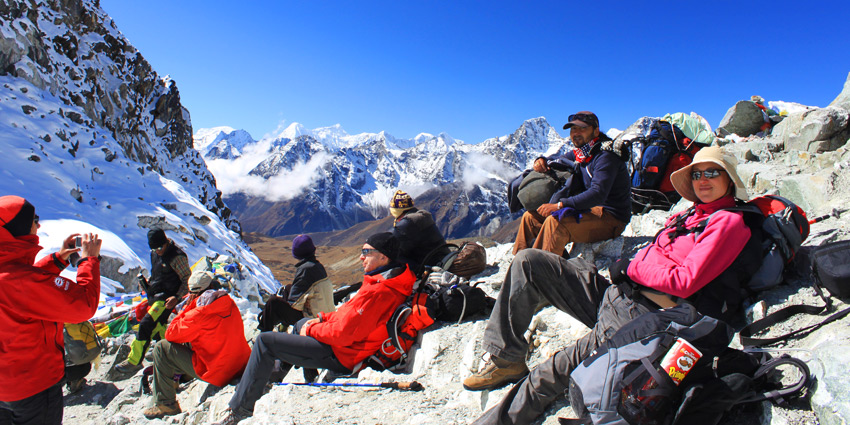
Probably, the most classical trekking trail in Nepal, Jiri to Everest Base Camp Trek offers you entire insights into the Everest region. The trail passes through unspoiled local villages of the lower Everest region and lets you experience authentic Sherpa and Tamang villages. The same trail was used by Tenzing Norgay Sherpa and Edmund Hillary while going to scale Mt. Everest in 1953.
Why Jiri to Everest Base Camp Trek?
- To experience the unspoiled nature and culture of the lower Everest region
- To capture the most stupendous Mt. Everest, Thamserku, Amadablam, Lhotse, Nuptse and Pumori, and other towering mountain peaks
- To step at the base camp of the highest mountain peak in the world, Everest Base Camp.
- To experience the marvelous Sherpa kingdom and their authentic culture
- For exploring Sagarmatha National Park, the national park located at the highest elevation of the world and also a UNESCO World Heritage Site.
- For visiting Hotel Everest View, Namche Bazaar, Gokyo Valley, Everest base camp Tengboche Monastery, and Lukla Airport, etc.
You will do the same thing for your accommodation and food, permits, and other necessary things for your Jiri to Everest Base Camp Trek as you do for your Everest Base Camp Trek.
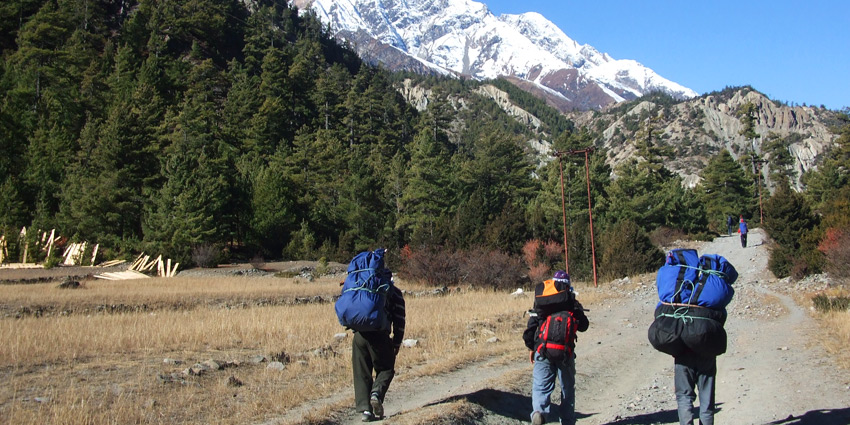
The wilderness lovers will find Annapurna Circuit Trek as an incredible adventure among the magnificent Himalayas and landscapes. The fabulous Annapurna range, Dhaulagiri, Lamjung Himal, Manaslu, and Ganesh Himal are the dominant mountain views to be seen during the trek. Actually, Annapurna Circuit Trek is an amalgam of the lower Mustang region and Annapurna region. So, those who have chosen this trek will experience both regions.
Why Annapurna Circuit Trek?
- To capture the fabulous Annapurna range, Dhaulagiri, Lamjung Himal, Manaslu, and Ganesh Himal
- For Incredible Arid Landscapes
- To celebrate the walk through the lush forest, sacred religious sites, local villages, etc
- To have an insight of both the Mustang and Annapurna region
What are other things to know about Annapurna Circuit Trek?
There are some other important things to know about Annapurna Circuit Trek. These are:
How long is the trek?
Annapurna Circuit Trek-17 days’ itinerary is the most popular itinerary for this trek. The 17 days trek itinerary has proper acclimatization and a leisurely walking pace. People also go with various other itineraries like Short Annapurna Circuit Trek, Budget Annapurna Circuit, and so on. Separate at least 17 days for a memorable accomplishment of Annapurna Circuit Trek.
How are food and accommodation?
We use local teahouses/lodges for our food and accommodation during Annapurna Circuit Trek. We will get ordinary beds which are neat enough to stay overnight. The same lodges/teahouses offer us food items as mentioned in the menu. You have a choice and order it. You may have to wait for the food for around 20-30 minutes during autumn (Sep-Nov) as the lodges are fully packed.
How difficult is the trek?
Annapurna Circuit Trek is a strenuous trekking trip in Nepal encompassing both Mustang and Annapurna region. We are crossing Thorung La Pass in this trekking which is the highest elevation we get. It is located at an elevation of 5416m above sea level. We need fairly high-level physical fitness and stamina for working at least 7-8 hours a day for this trek with numerous ups and downs. Prepare for this trek with basic skills of hiking/trekking or do involve in short hiking/trekking before you embark on this trail.
What are the required permits?
Annapurna Conservation Area Entry Permit and TIMS Card are the two required permits for Annapurna Circuit Trek. If you join a local travel company in Nepal, they will easily obtain these permits for you. But for Nepali nationals, both permits are not needed for Annapurna Circuit Trek.
What is the best weather(s) of the year for trekking in Nepal?
Autumn (Sept-Nov) and spring (Mar-May) are the two best seasons for every kind of trekking/hiking in Nepal. However, people do the trek on pre-winter days. If you are doing Nepal trek on winter days, you have to be very watchful about the weather forecasts. In fact, in peak seasons (autumn and spring), the local lodges and the trail are crowded. If you cannot bear the crowd on the trip, do not plan your trekking trip for autumn; better go with spring, which is relative, less crowded.
We are sure that you will be able to sort out your best trekking trip among various trekking packages in Nepal after going through this article. If you require customizing the trip or need to ask for any further information about any trekking trip in Nepal, contact us.